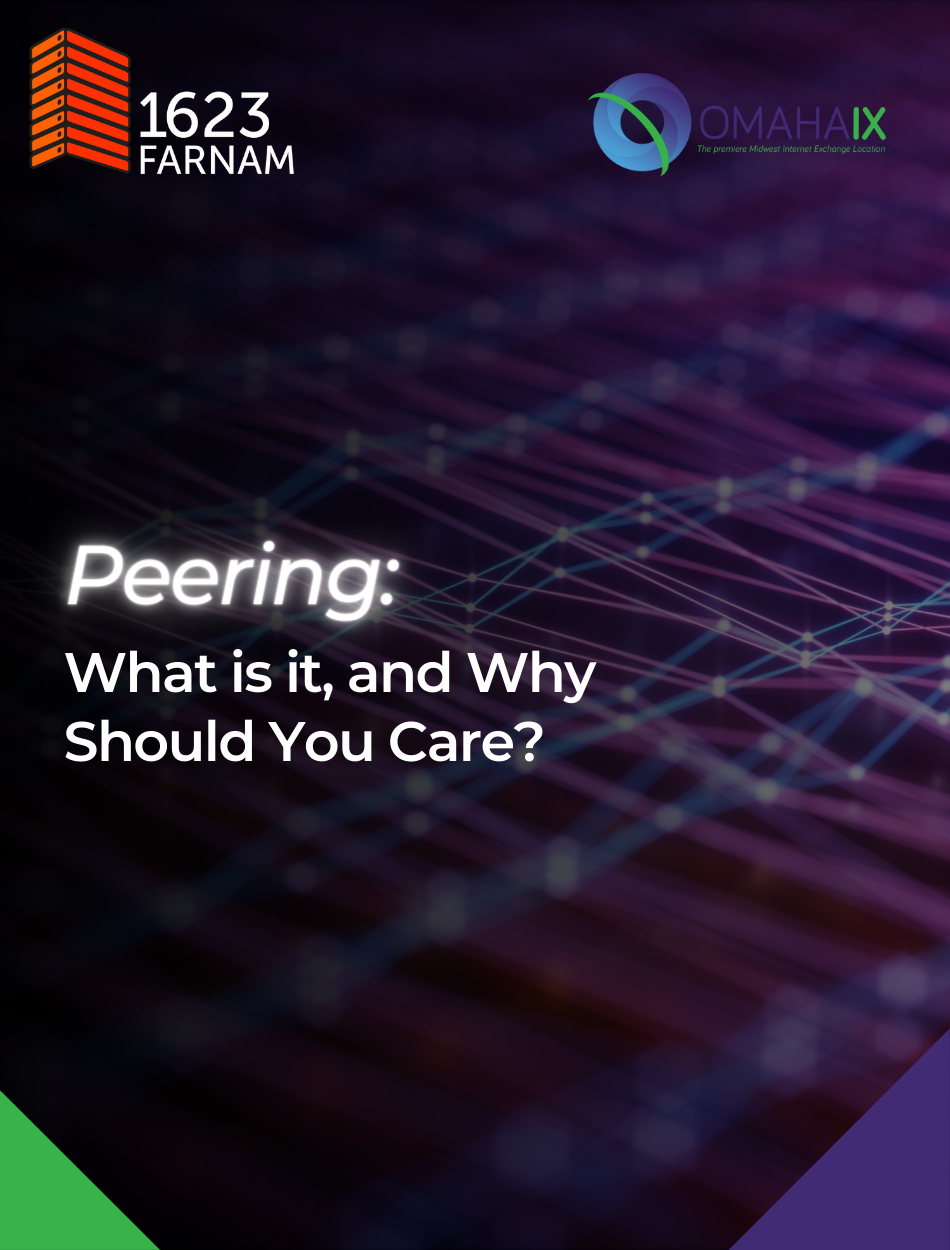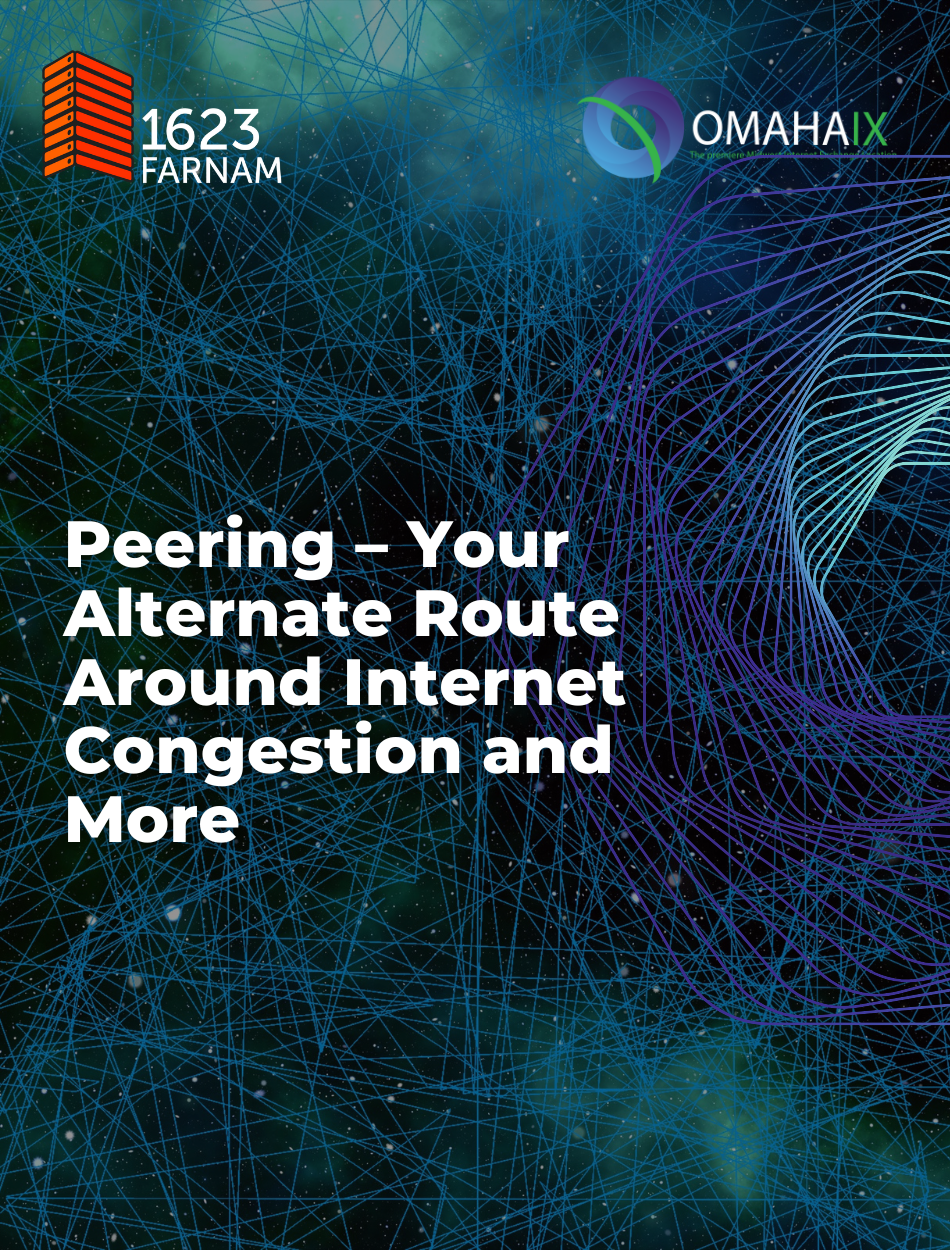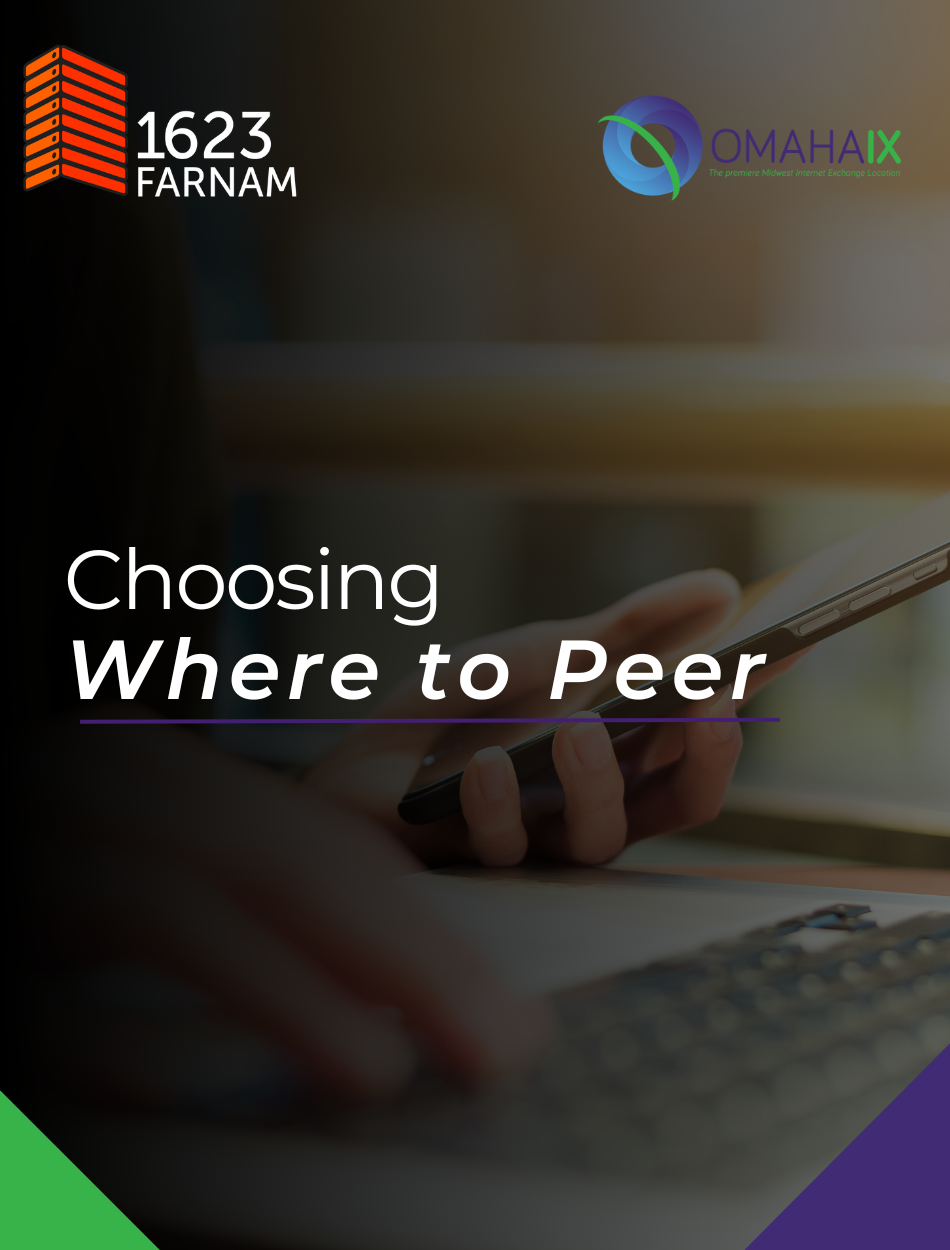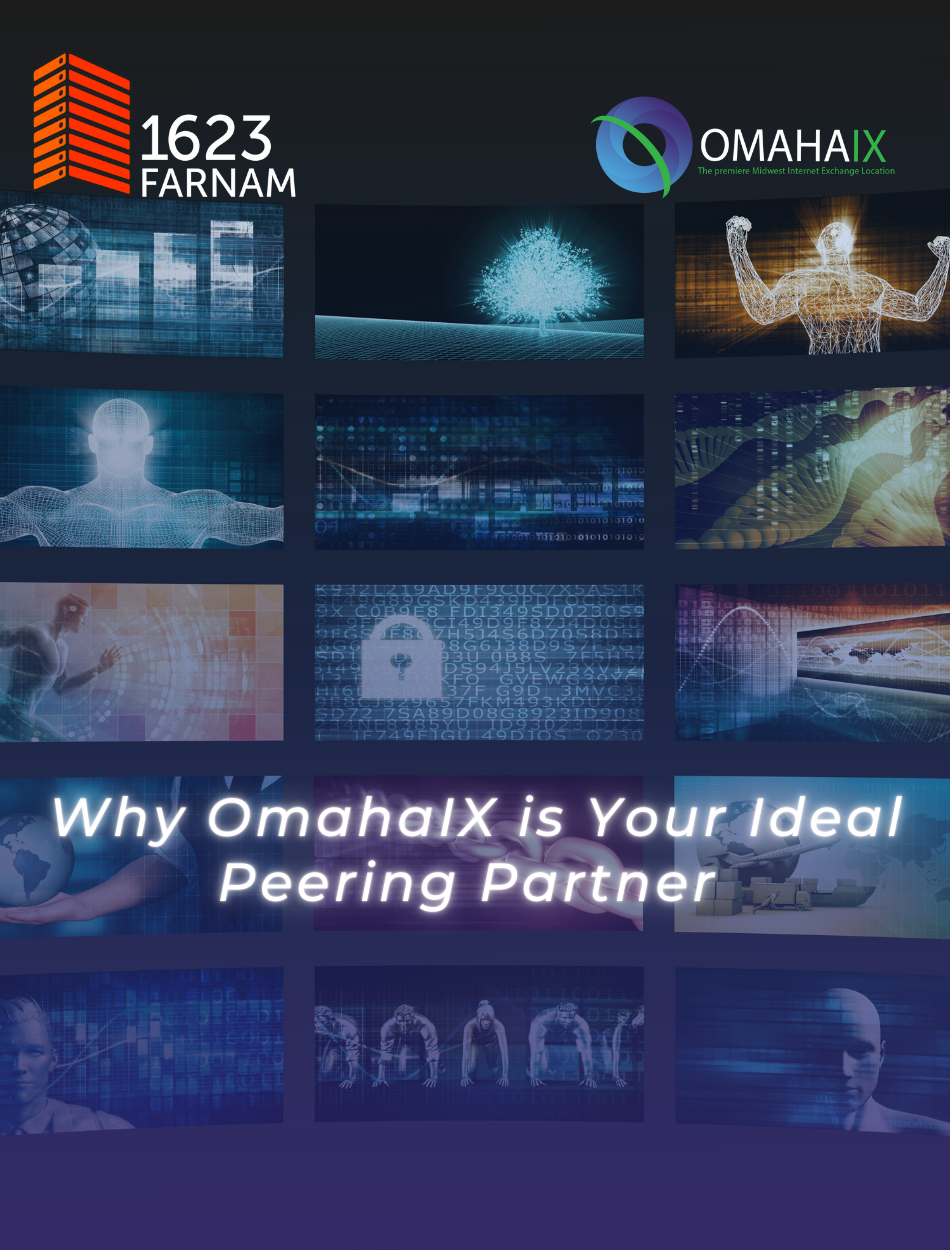The Complete Guide to Peering
Say hello to the new frontier of advanced connectivity: Peering and Internet Exchanges. This method of directly linking at distinct network nexus points has been redrawing the map of connectivity for some time now, revolutionizing how organizations of all shapes and sizes get their data where it needs to go — and offering a host of benefits along the way.
Let’s take a deep dive into what peering is, why it matters, how you can make the most of it (along with some helpful tips and tricks that can truly optimize your networking and connectivity performance).

Why the rise in peering — and what is it, anyway?
Peering is a broad term that describes various different iterations and arrangements (which you can read more about here), but at its core, it is the act of directly connecting two independent networks so they can freely exchange traffic. An Internet Exchange (or IX) is the destination where this connection occurs — global hubs where growing numbers of peers gather to exchange their traffic and have it sent effectively.
Before peering and direct interconnection, connectivity was a wild west that left businesses hoping their mission-critical traffic would make it to its destination effectively. Outdated methods of delivering traffic included roping third-party transit providers and upstream connectivity partners into the mix.
Unfortunately, in addition to adding transit costs and liabilities to the business’s balance sheet, these old-fashioned methods also meant relinquishing control of your traffic. The transit provider instead had complete say over how it was transferred to its destination — which could (in the worst cases) sometimes lead to data being sent to a completely different coast before returning back to the desired destination. That’s a process called tromboning.
Today, as needs accelerate and IT transformations push businesses to new, highly mobile, fast-moving heights, customized connectivity is paramount. Low latency is what enables futuristic opportunities and next-generation value from technologies like AI, 5G and the Metaverse — which means connectivity must move at the pace of digital innovation.
In our new and rapidly evolving world, a strong, resilient, fast and flexible foundation of connectivity is at the very core of success, and leveraging a connectivity method that can help organizations continue optimizing to meet the demands of our day is vital.
For more foundational information, don’t miss our FAQ.
What benefits does peering offer?
Interconnection, as a symbiotic arrangement that delivers benefits to all involved, offers an extensive list of advantages, including greater reach, reliability, speed and control over traffic.
Peering does more than just help organizations avoid congestion and advanced application-killing latency. It also enables them to meet evolving demands for cybersecurity and uptime by creating heightened resilience and puts them on a path to ever-evolving, self-bettering connectivity through its collective ecosystem format.
When more and more networks join together at one peering location, that means every peer has more networks to choose from, in turn offering them increasing levels of choice, reliability, flexibility and value over time (thanks to the availability of data gravity in some choice locations).


So, what’s the catch? Doesn’t a better solution come with greater expenses?
If you find yourself asking that question above, we’ve got good news for you: Peering is a win-win, because it offers all of those benefits while actually removing costs.
Remember those transit costs we mentioned? Those go away when an organization chooses to peer. We will note that IP costs have been on a downturn — but that still doesn’t mean you’re getting the most optimization for your dollar. In fact, the IX might just be the key to recession-proof IT. Heightened control, lower latency and increased redundancy create an ‘all roads lead to Rome’-esque advantage — all of these benefits put money back in your pocket. (To learn more about those three benefits, check out our blog here.)
When weighing the cost of tradition versus peer-to-peer value, it’s an easy choice to move toward direct interconnection.
However, if you’re still not convinced, we did the math for you in our new eBook about the cost of peering — be sure to check that out for a detailed breakdown!
At the end of the day, a peering port just pays off. It’s as simple as that. So, what’s next in the journey to peering?
Choosing the ideal place to peer.
As with any IT decision or digital transformation choice, selecting a peering hub comes with a lot of considerations — but fear not. We’ve done our best to take the guesswork out of making this choice by walking through all the major aspects of IXs and what impact they have (and what you should look for).
Things like the location of the IX, how easy it is to deploy there and what the ecosystem looks like are all big factors in any choice. To help you learn more, here are a few resources we’ve put together to help you choose the best location — and know what you need to do to get ready to peer:


What do I need to know about OmahaIX?
When it comes to choosing a great peering location, we’re proud to say that our own OmahaIX — located in our edge interconnection hub and colocation data center 1623 Farnam — brings a lot to the table.
To start, we reside in Nebraska, a nexus of global, national, regional and local connectivity. That strong foundation means we’re able to pull in high-value peers that deliver more advantages to you and your organization (thanks again, data gravity!). You can view our list of peers here, but keep in mind that the list is always growing. In fact, even massive hyperscalers like Google and Facebook continue to turn up additional peering opportunities at our location.
Our robust, high-value ecosystem is backed by a team that truly listens and partners with customers to help them get the best of the best, paving the way for IT success. That means we’re always finding ways to improve and listening to what our peers have to say.
That begs the question: What do our peers really think of us? Glad you asked! Our value can be best summed up in a mix of:
- Ideal location
- Cost efficiency
- Better connectivity
- The ability to solve key business challenges
“Overall, the survey results show that Omaha IX is in the right place, at the right time, with the right technology and strategic vision to help customers achieve their 5G transformation and build connectivity that’s future-proofed. We are especially grateful for the high response rate, which indicates that our customers are engaged and value their relationship with us.”
–Todd Cushing, President of 1623 Farnam.
For more on that, check out our customer survey results here.
To bring it all together, we’re going to assume we’ve convinced you that peering is definitely the way to go. So, before you jump in, we’ll offer one final tip that can be game-changing for how you maximize peering benefits: PeeringDB.
Signing up for this freely available, user-maintained database of networks and go-to location for interconnection data is one favor we know you’ll want to do yourself (and it helps our ecosystem too, which means it helps you doubly).
More on that here: PeeringDB: What is it, and Why Should You Care?
Happy peering!
